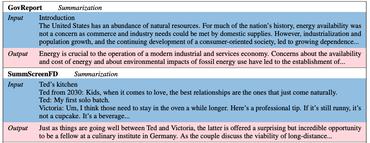Language Modelling
4514 papers with code • 51 benchmarks • 157 datasets
Language Modeling is the task of predicting the next word or character in a document. This technique can be used to train language models that can further be applied to a wide range of natural language tasks like text generation, text classification, and question answering.
Historically, language modelling was done with N-gram language models (which still have niche uses), but since the 2010s neural language models took over, and starting from the 2020s SOTA was achieved exclusively with large language models (LLMs).
A model's language modeling capability is measured using cross-entropy and perplexity. Some datasets to evaluate language modeling are WikiText-103, One Billion Word, Text8, C4, The Pile, among others.
Some notable state-of-the-art language models include:
Check below for all state-of-the-art models.
Here are some additional readings to go deeper on the task:
- Language Modeling - Lena Voita
( Image credit: Exploring the Limits of Language Modeling )
Libraries
Use these libraries to find Language Modelling models and implementationsDatasets
Subtasks
Latest papers with no code
Generative AI for Low-Carbon Artificial Intelligence of Things
In this article, we explore the potential of GAI for carbon emissions reduction and propose a novel GAI-enabled solution for low-carbon AIoT.
Can Perplexity Predict Fine-Tuning Performance? An Investigation of Tokenization Effects on Sequential Language Models for Nepali
To reduce this gap we used 6 different tokenization schemes to pretrain relatively small language models in Nepali and used the representations learned to finetune on several downstream tasks.
Contextual Spelling Correction with Language Model for Low-resource Setting
The task of Spell Correction(SC) in low-resource languages presents a significant challenge due to the availability of only a limited corpus of data and no annotated spelling correction datasets.
SERPENT-VLM : Self-Refining Radiology Report Generation Using Vision Language Models
Radiology Report Generation (R2Gen) demonstrates how Multi-modal Large Language Models (MLLMs) can automate the creation of accurate and coherent radiological reports.
Recall, Retrieve and Reason: Towards Better In-Context Relation Extraction
On the one hand, retrieving good demonstrations is a non-trivial process in RE, which easily results in low relevance regarding entities and relations.
Transfer Learning Enhanced Single-choice Decision for Multi-choice Question Answering
Multi-choice Machine Reading Comprehension (MMRC) aims to select the correct answer from a set of options based on a given passage and question.
VANER: Leveraging Large Language Model for Versatile and Adaptive Biomedical Named Entity Recognition
By combining the LLM's understanding of instructions with sequence labeling techniques, we use mix of datasets to train a model capable of extracting various types of entities.
Scaffold-BPE: Enhancing Byte Pair Encoding with Simple and Effective Scaffold Token Removal
Due to their infrequent appearance in the text corpus, Scaffold Tokens pose a learning imbalance issue for language models.
Medical Vision-Language Pre-Training for Brain Abnormalities
Vision-language models have become increasingly powerful for tasks that require an understanding of both visual and linguistic elements, bridging the gap between these modalities.
Large Language Model Agent as a Mechanical Designer
This creates a trade-off between the efficiency of automation and the demand for resources.




















































 IMDb Movie Reviews
IMDb Movie Reviews
 Pubmed
Pubmed
 Penn Treebank
Penn Treebank
 WikiText-2
WikiText-2
 C4
C4
 WikiText-103
WikiText-103
 BookCorpus
BookCorpus
 The Pile
The Pile
 BIG-bench
BIG-bench

